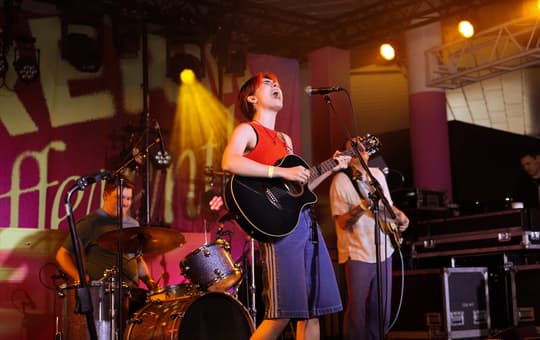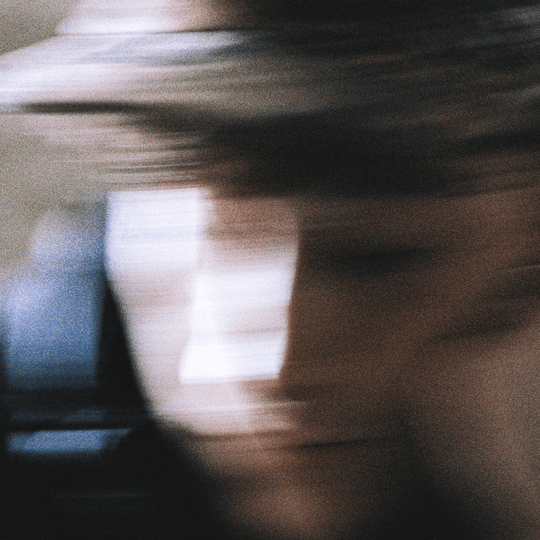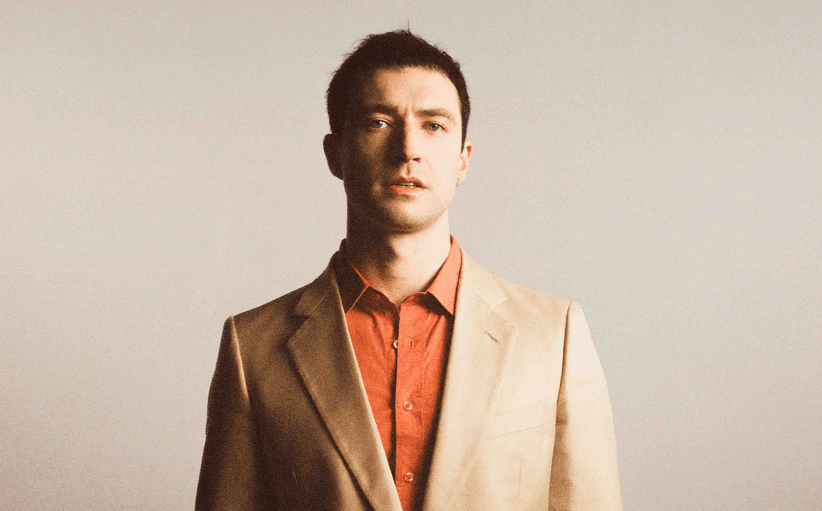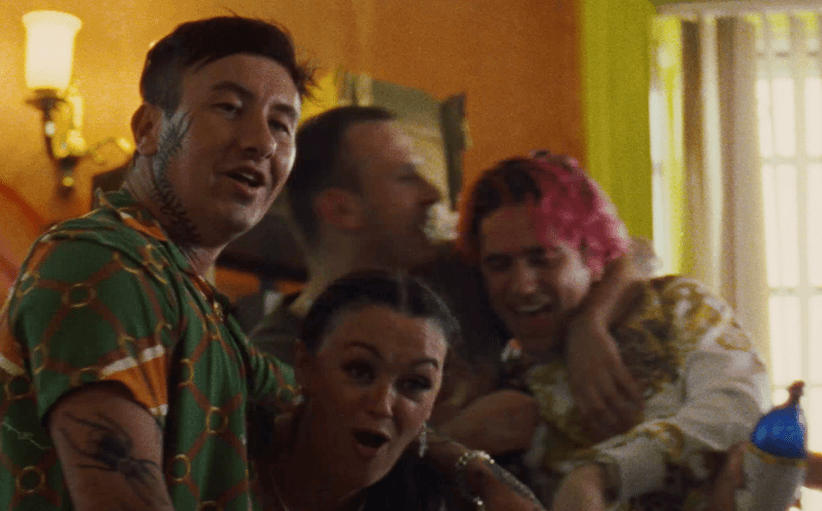La Route du Rock
La Route du Rock is a festival in St Malo, France – the birthplace of the poet Chateaubriand, the father of French Romanticism. In this sense, there is perhaps no better location for an event dedicated to guitar-based music. Rock, for all of its many permutations, is a genre that has frequently attempted to preserve Romanticism’s ideals with all the perverse lust of a grave robber.
In terms of themes, both Rock and Romanticism are attuned to those of love, death and rebellion, whether divine or earthly. When thinking of Romanticism, one may consider Milton’s Paradise Lost, or William Blake beating up an English soldier for loitering in his garden. Conversely, when thinking of rock music, one may be prompted to consider Mick Jagger pretending to be Satan, or Elvis Presley holding a sheriff’s badge, driving a Mustang, stuffing his face with pills. Both forms are essentially proto-modern, as they prefigure the discourse of modernity, in which the human subject that loves, dies and rebels is called into question itself.
And while such assessments may be ahistorical, this is only a reflection of Rock’s atemporal influence, evidenced by the genre’s disproportionate representation at summer music festivals in which old bands have a seemingly infinite mandate and new bands are caught in an endless mimesis of previous icons; La Route du Rock is no exception. High on the bill on Friday was Spiritualized, whose watershed album, 1997’s ‘Ladies and Gentlemen We Are Floating In Space’, exemplified the trope of atemporality in its retro use of gospel choirs, psychedelia and titular sentiment resembling Francis Fukuyama’s The End of History and The Last Man published five years before.
On his recent album, ‘Huh?’, however, Spiritualized’s Jonathan Pierce abandoned such grandiose statements in favour of total bemusement. This becomes manifest through a listlessness typified by this evening’s rendition of Spacemen 3’s ‘Sound of Confusion’ played at crawling pace. Fortunately, by the last three numbers the band find some energy, announcing an upsurge through a turn of ‘Ladies and Gentlemen…’ and ending with another Spacemen 3 classic, Take Me to the Other Side, as only if to reiterate this formless conception of history, in which old and new appear alike.
Elsewhere, Mazzy Star’s performance on Sunday also functioned in this manner. Another member of the 90s shoegaze/dreampop elite, tonight Mazzy Star rely heavily on material from their seminal albums, ‘She Hangs Brightly’ and ‘So Tonight That I Might See’, with a few new numbers added as a bonus. The set is entertaining, but the familiarity of songs such as Fade into You, lend it the same static and lifeless atmosphere of Madame Tussauds.
This sensation of déjà vu would become a common feeling over the weekend. Between the familiar oeuvre of Mark Lanegan and Stephen Malkamus, several newer bands appeared dressed in black, presenting various reinterpretations of a small number of post-punk groups. This trend began on Friday night with The Soft Moon, who sounded like the rip-off new wave group in the 2009 adaptation of Bret Easton Ellis’s The Informers. The next day London’s Savages played their first ever show in France, displaying little material that could not be reduced to the sum of its influences in Joy Division, New Order and Sioxsie Sioux – ditto Chromatics and stalwarts The Walkmen who played on Sunday. The irony contained in this gesture is overwhelming: Post-punk was singular because of its adherence to the values of high modernism that demanded either a total rupturing of pre-existing orders or nothing at all. In reducing these demands to a set of extant sounds and signifiers, the music that these current bands have created is the exact opposite of everything the bands that they were inspired by tried to achieve.
The xx, on the other hand, are not a group that could be accused of acting in the same way, despite their tendency toward black attire. On Saturday evening however, submerged beneath a cloud of dry ice, it seemed as if they were hiding beneath the smoke in more ways than one. Songs from their debut were played with a somber tone. This tension was later heightened through the introduction of new tracks in which the formula of guitars and vocals is broken by crescendos of house loops that never climax. Overall, though, little was given away about what to expect from the next album, ‘Coexist’, and the tension remained without release.
Nonetheless, there were some exceptional performances. Squarepusher’s Friday night gig was typically gonzo, played loudly and at high velocity when everyone was going to bed. Indeed, the best two acts of the weekend were also to be found tucked away, but on a small rig behind the main stage’s mixing desk. The first was Chicago’s Willis Earl Beal, whose debut album, ‘Acousmatic Sorcery’, sounded very much like Tom Waits’s ‘Orphans: Brawlers, Bawlers & Bastards’. Live, however, there is a performance aspect that Beal did not express on record – something akin to the intensity and absurdity of Screamin’ Jay Hawkings, Allan Vega and John Maus. Terrifying.
The second notable act was Colin Stetson, who is probably better known for being the saxophonist in the Arcade Fire, but should perhaps have greater notoriety for scaring audiences at rock festivals by playing atonal compositions with a baritone saxophone. The skill required to play a woodwind instrument this way is incomprehensible, but perhaps a fair indication is given by the fact that to achieve a similar result on the piano, the American avant-garde composer, Conlon Nancarrow, relied on mechanical pianos to play with such speed and precision.
Conclusions, then, point to an even starker musical contrast at festivals such as La Route du Rock than ever before. While older bands and older sounds tend to dominate, the marginal inclusion of smaller, more experimental musicians such as Beal and Stetson, act as a knowing apology for their wider absence. Broadly speaking, this is endemic in the music industry. Similar tactics have been followed by music glossies struggling with diving sales figures, whose front covers nowadays act as a carousel for older acts such as Nirvana and The Sex Pistols in order ensure advertising revenue from the major labels, who are also running out of money. If the industry is to keep on going – by supporting new original music – then it must transition from its current Romantic model, infatuated with the past, and embrace Modernity, with all the risks that entails.













